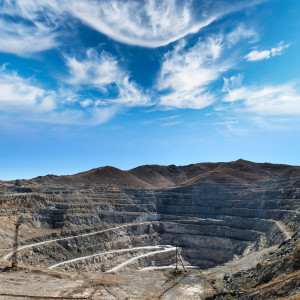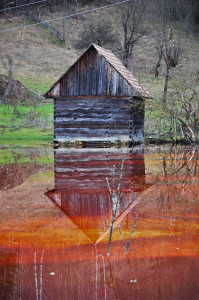On March 24, 1989, the oil tanker Exxon Valdez struck Bligh reef in Alaska’s Prince William Sound, gashing the tanker’s single hull and spilling more than 11 million gallons of oil into the environment. This is the equivalent of seventeen Olympic-sized swimming pools. The spill caused the death of billions of salmon and herring eggs, up to 22 killer whales, about 250 bald eagles, ~300 harbor seals, and ~2,800 sea otters; and an estimated 250,000 seabirds. At the time, oil could be found on 1,000 miles of coastline, the attempted clean-up took about four summers, and Exxon said they spent $2 billion on the clean-up project.
However, the clean-up was not completely effective as oil remains today on or beneath the surface of more than 50% of the beaches. Wildlife recovery has occurred for about 60% of the 27 animal species monitored. This does not include the herring fishery which hasn’t recovered, but once supported about half of a Cordova fishermen’s income. Restitution for the fishermen’s lost income would come years later through a U.S. Supreme Court ruling to make it happen. As it turned out, Exxon paid a mere ten cents on the dollar to the fishermen for their lost income. Not too shabby a deal for Exxon who reports billions in profits each fiscal quarter.
So, reminiscent of the Exxon Valdez accident, Alaskans are faced with the possibility of an even greater disaster. At stake, forty million sockeye salmon returning to Bristol Bay’s watershed each year. According to researchers at the University of Alaska Institute of Social and Economic Research, “the commercial salmon fishery is worth $1.5 billion a year, making it the most valuable wild-salmon fishery in the world.” Also, the salmon are an integral part of the natural ecosystem supplying valuable nutrients for brown bears, eagles and  other species dependent upon their return. Bristol Bay has one of the world’s greatest concentrations of seabirds. Even you and I, here in the lower 48 states, are dependent on this yearly migration as an estimated 40% of our fish catch comes from Bristol Bay.
other species dependent upon their return. Bristol Bay has one of the world’s greatest concentrations of seabirds. Even you and I, here in the lower 48 states, are dependent on this yearly migration as an estimated 40% of our fish catch comes from Bristol Bay.
Where else could we get our heart healthy omega-3 fats if something were to happen to this wild salmon population? Farm raised? Doubtful, we already know what happens to animals raised on feedlots (more).
 Pebble Mine as proposed by Northern Dynasty Minerals Ltd., would be an open-pit copper and gold mine that would cover an area about 7 square miles and come close to the depth of the Grand Canyon itself. Given its proposed size the mine could destroy up to 94 miles of streams and 5,350 acres of wetlands, lakes and ponds. Included would be two earthen dams to hold back waste rock and toxic effluent (tailings) from the mine. Depending on the mine’s size, the waste rock and toxic effluent could fill a professional football stadium 880 times for a small mine or 3,900 times for the largest mine. The size of the mine and the infrastructure needed to support the mine is already enough of an environmental impact, but what’s the concern for these earthen dams? These dams are to be built-in a seismically active area where earthquakes can reach up to 7 in magnitude on the Richter scale with 10 being the highest number for that scale.
Pebble Mine as proposed by Northern Dynasty Minerals Ltd., would be an open-pit copper and gold mine that would cover an area about 7 square miles and come close to the depth of the Grand Canyon itself. Given its proposed size the mine could destroy up to 94 miles of streams and 5,350 acres of wetlands, lakes and ponds. Included would be two earthen dams to hold back waste rock and toxic effluent (tailings) from the mine. Depending on the mine’s size, the waste rock and toxic effluent could fill a professional football stadium 880 times for a small mine or 3,900 times for the largest mine. The size of the mine and the infrastructure needed to support the mine is already enough of an environmental impact, but what’s the concern for these earthen dams? These dams are to be built-in a seismically active area where earthquakes can reach up to 7 in magnitude on the Richter scale with 10 being the highest number for that scale.
How could any company effectively clean-up and compensate for the losses if the dams were to give way during an earthquake? And keep in mind, we are talking about years of mine operation and into perpetuity for these dams to exist unless somehow the land were miraculously restored.
Last summer, there was a tailings dam break at the Mount Polley Mine in British Columbia. Downstream residents were warned not to drink from the affected waterways. The cause of the break was attributed to heavy rainfall, production pressure, and regulatory oversight failure. The company that built the tailings dam at the Mount Polley Mine are expected to build the two dams for the Pebble Mine.
This begs the question, what expertise does this company or any company have for building dams in a seismically active area?
This is a contentious battle with strong opposition for building the mine. Senator Mark Begich from Alaska said the Pebble Mine is the “wrong mine in the wrong place”.

With 40% of the watersheds in the western United States contaminated by pollution from this type of mine, it’s not a wonder why many legislators from those states are opposed to the mine too. In addition, there are 50 jewelers who said they would not use the gold from this mine. The U.S. Environmental Protection Agency has 233,000 public comments for which 90% urge the agency to protect Bristol Bay. Many conservation groups like the National Wildlife Federation, the National Audubon Society, Trout Unlimited and the Wild Salmon Center are deeply concerned about the risk associated with this project.
So with all this opposition to building the mine, concern for the salmon fishery, the environment, and the livelihood of its native people, why is Thomas Collier, CEO of the Pebble Partnership, challenging the EPA on its veto power over the project? Could it be because of his experience at the law firm of Steptoe & Johnson, which has an arm focused on mining and permitting? Are there mining loopholes in the Clean Water Act that allow hard rock mines to treat the nearest wetland or lake as a dump site?
There are two regulatory loopholes and with his experience at the law firm of Steptoe & Johnson, Thomas Collier may be a strong adversary.
To the EPA’s credit, they have an independent peer-reviewed scientific study of a big mine’s impacts on the Bristol Bay watershed, so they want to use that information to help protect the watershed. My personal concern is that, even with substantial evidence the mine will go through because of big money and politics. As you read above, I’m not alone in the concern for Bristol Bay, and the National Wildlife Federation urges us to take action by going to their website at www.nwf.org/miningloopholes.
Click here for post references.
Additional Resources:
Click here to listen to the TEDx Talk entitled Salmon Strongholds.
Click here to see the movie trailer for The Breach.
Click here to view Canada’s Worst Mining Disaster – Mount Polley
Click here to learn what happened when a tailings dam broke at the Ok Tedi mine.
Click here to learn more about the seafood we consume.
Make my salmon wild caught and here is why.
Click here to watch Xboundary: environmental onslaught in northern British Columbia
For my next post, we will look at the concept of holistic management and climate change.
If you would like to share your comments about this post, then please contact me at myorigins@kenpledger.com or leave a comment below.
Follow me on Twitter: Ken Pledger@KenPledger to view new information or participate in discussions that are relative to the topics on this website.
If you found the information helpful, please share with your friends and family.